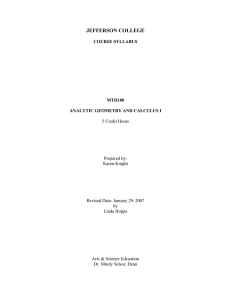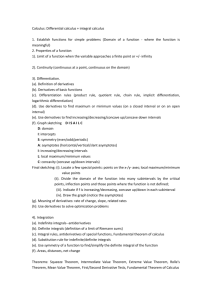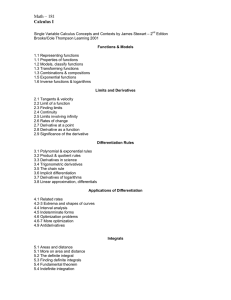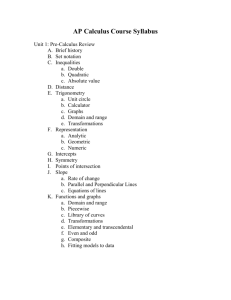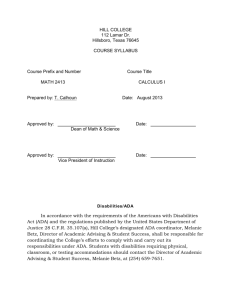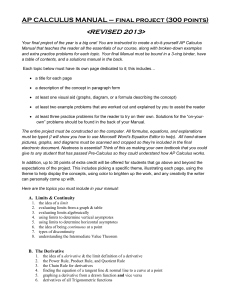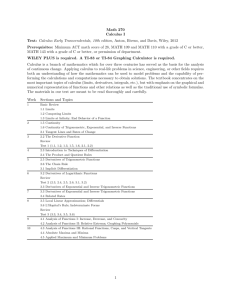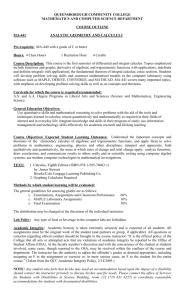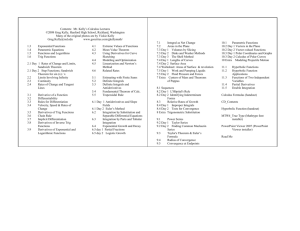MATH 2413 - Calculus I
advertisement
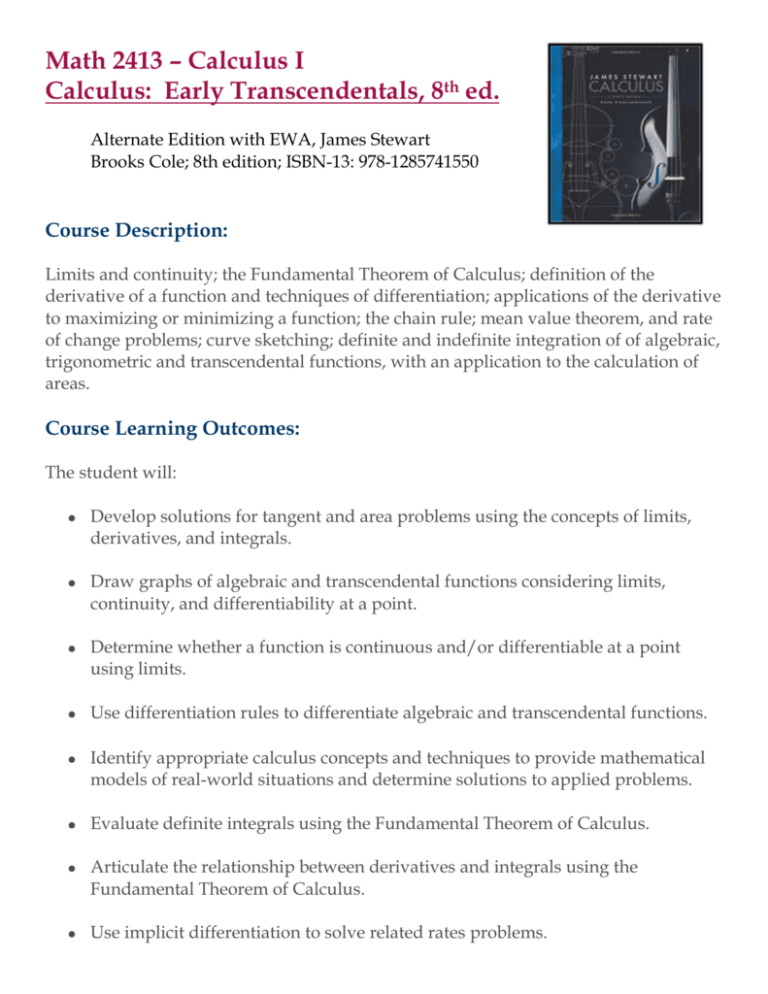
Math 2413 – Calculus I Calculus: Early Transcendentals, 8th ed. Alternate Edition with EWA, James Stewart Brooks Cole; 8th edition; ISBN-13: 978-1285741550 Course Description: Limits and continuity; the Fundamental Theorem of Calculus; definition of the derivative of a function and techniques of differentiation; applications of the derivative to maximizing or minimizing a function; the chain rule; mean value theorem, and rate of change problems; curve sketching; definite and indefinite integration of of algebraic, trigonometric and transcendental functions, with an application to the calculation of areas. Course Learning Outcomes: The student will: Develop solutions for tangent and area problems using the concepts of limits, derivatives, and integrals. Draw graphs of algebraic and transcendental functions considering limits, continuity, and differentiability at a point. Determine whether a function is continuous and/or differentiable at a point using limits. Use differentiation rules to differentiate algebraic and transcendental functions. Identify appropriate calculus concepts and techniques to provide mathematical models of real-world situations and determine solutions to applied problems. Evaluate definite integrals using the Fundamental Theorem of Calculus. Articulate the relationship between derivatives and integrals using the Fundamental Theorem of Calculus. Use implicit differentiation to solve related rates problems. Book Section: Chapter 2 2.1 The Tangent and Velocity Problems 2.2 The Limit of a Function 2.3 Calculating Limits Using the Limit Laws 2.4 The Precise Definition of a Limit 2.5 Continuity 2.6 Limits at Infinity: Horizontal Asymptotes 2.7 Derivatives and Rates of Change 2.8 The Derivative as a Function Chapter 3 3.1 Derivatives of Polynomials and Exponential Functions 3.2 The Product and Quotient Rules 3.3 Derivatives of Trigonometric Functions 3.4 The Chain Rule 3.5 Implicit Differentiation 3.6 Derivatives of Logarithmic Functions 3.7 Rates of Change in the Natural and Social Sciences 3.8 Exponential Growth and Decay 3.9 Related Rates 3.10 Linear Approximation and Differentials 3.11 Hyperbolic Functions Chapter 4 4.1 Maximum and Minimum Values 4.2 The Mean Value Theorem 4.3 How Derivatives Affect the Shape of a Graph 4.5 Summary of Curve Sketching 4.6 Graphing with Calculus and Calculators 4.7 Optimization Problems 4.9 Antiderivatives Chapter 5 5.1 Areas and Distances 5.2 The Definite Integral 5.3 The Fundamental Theorem of Calculus 5.4 Indefinite Integrals and the Net Change Theorem 5.5 The Substitution Rule


